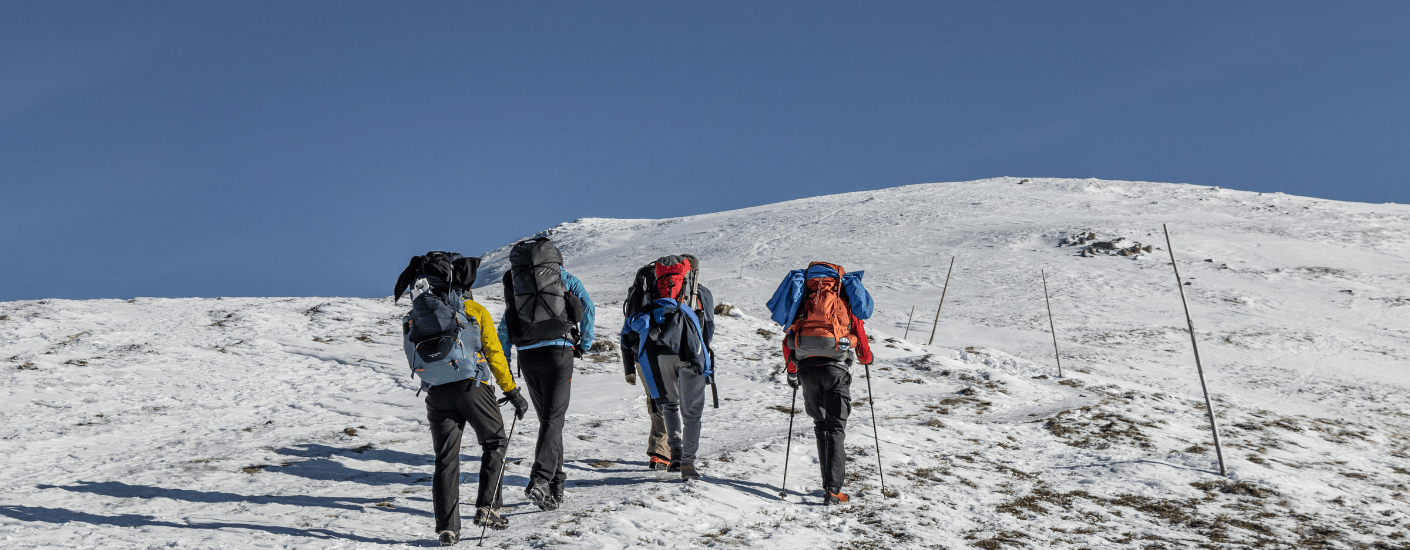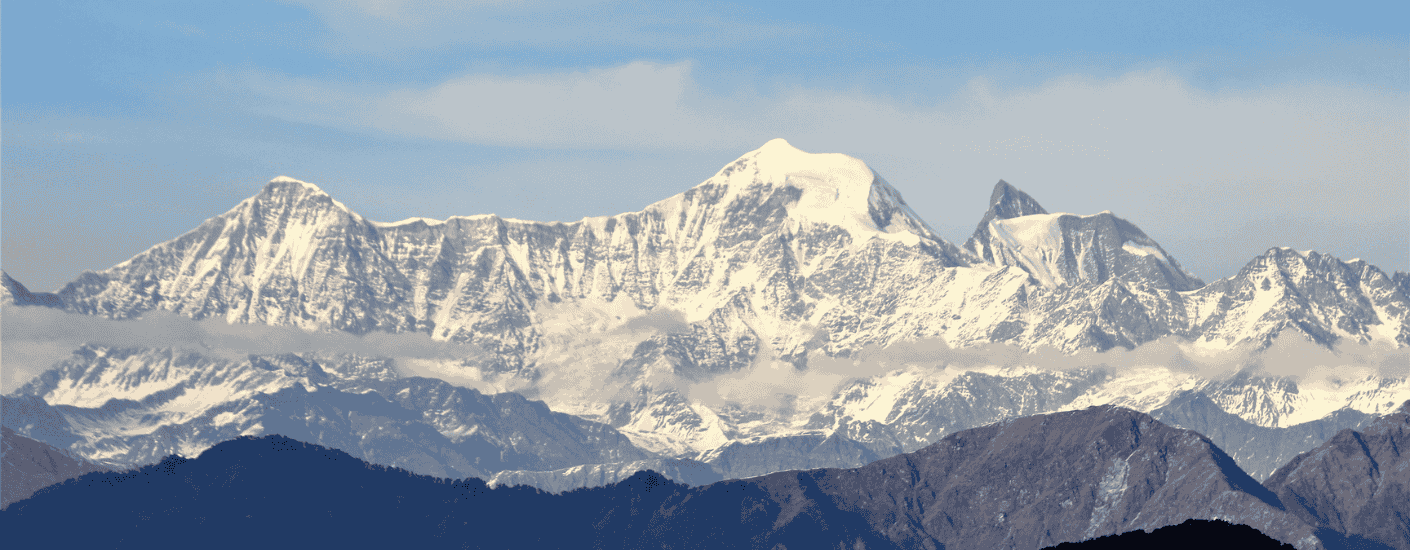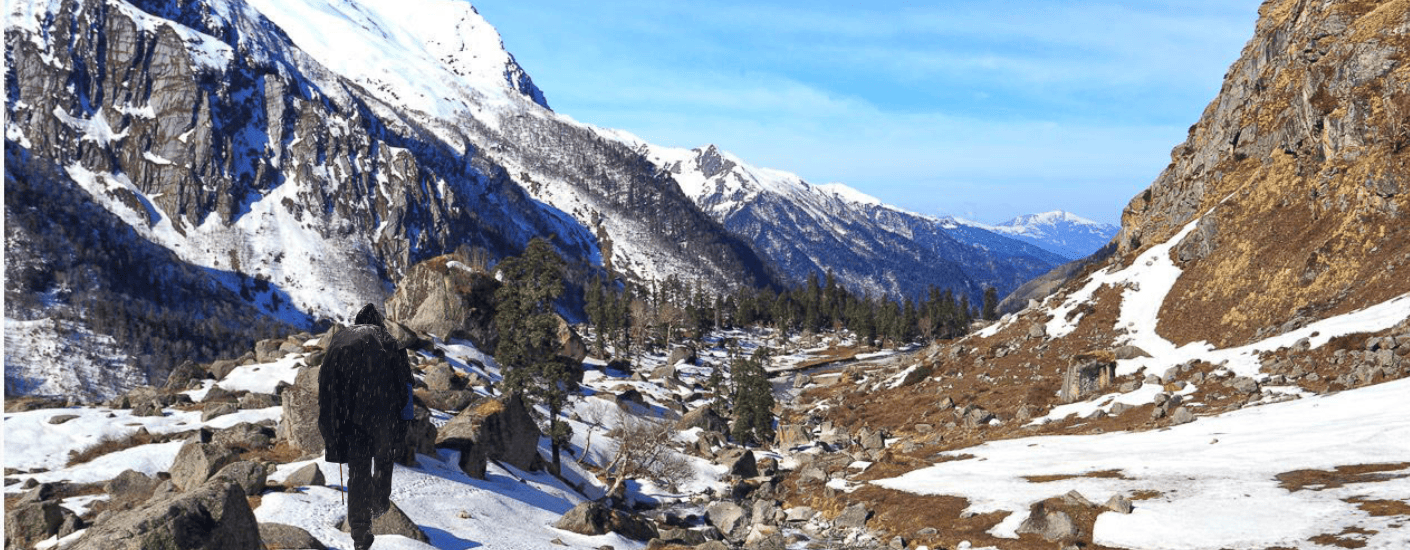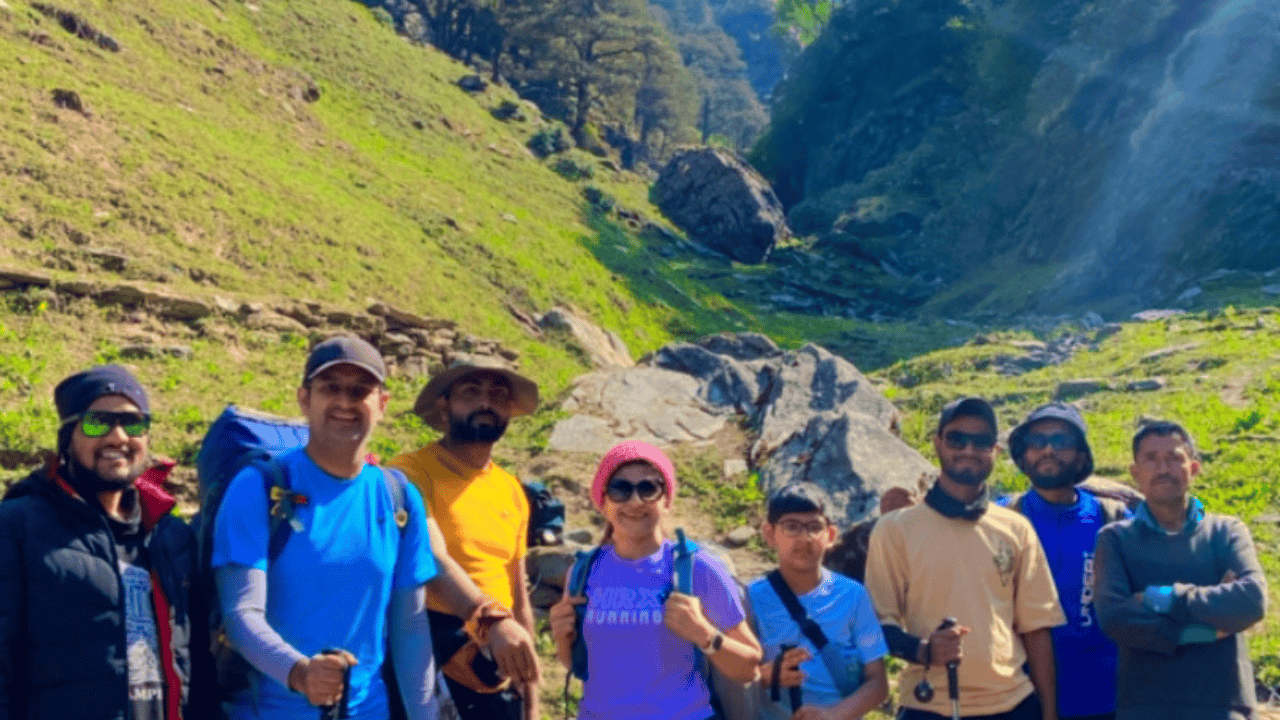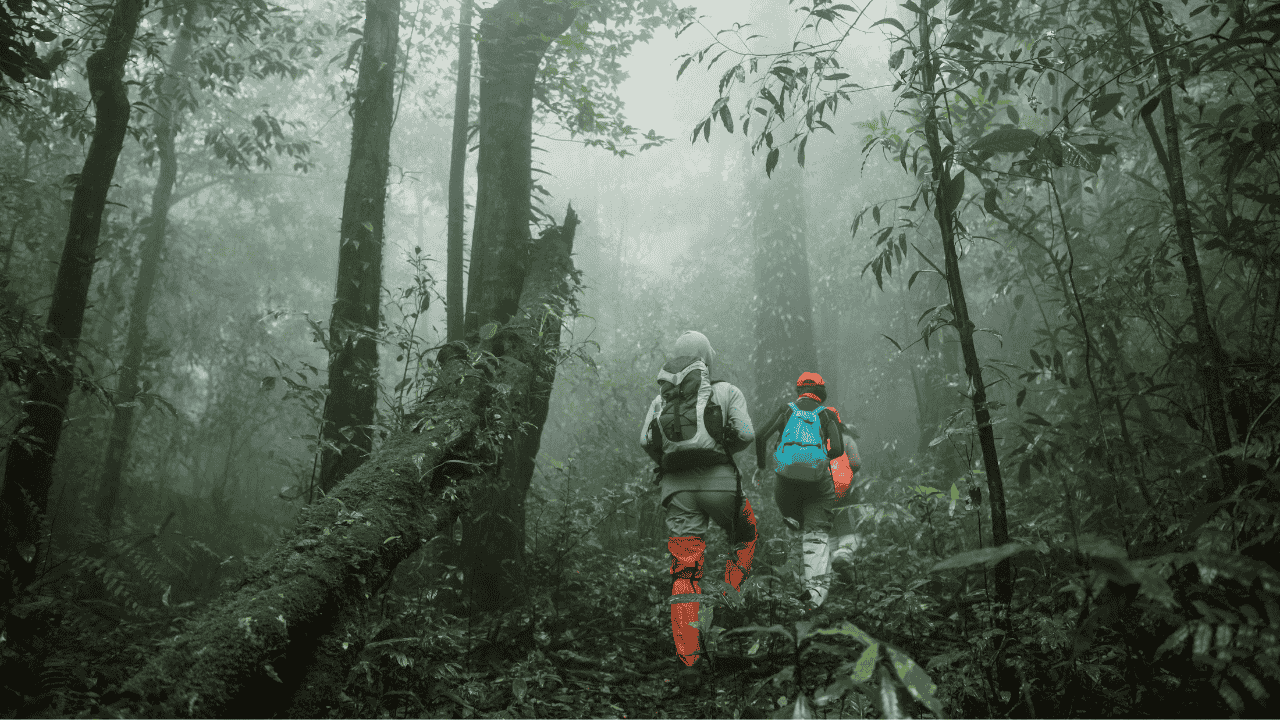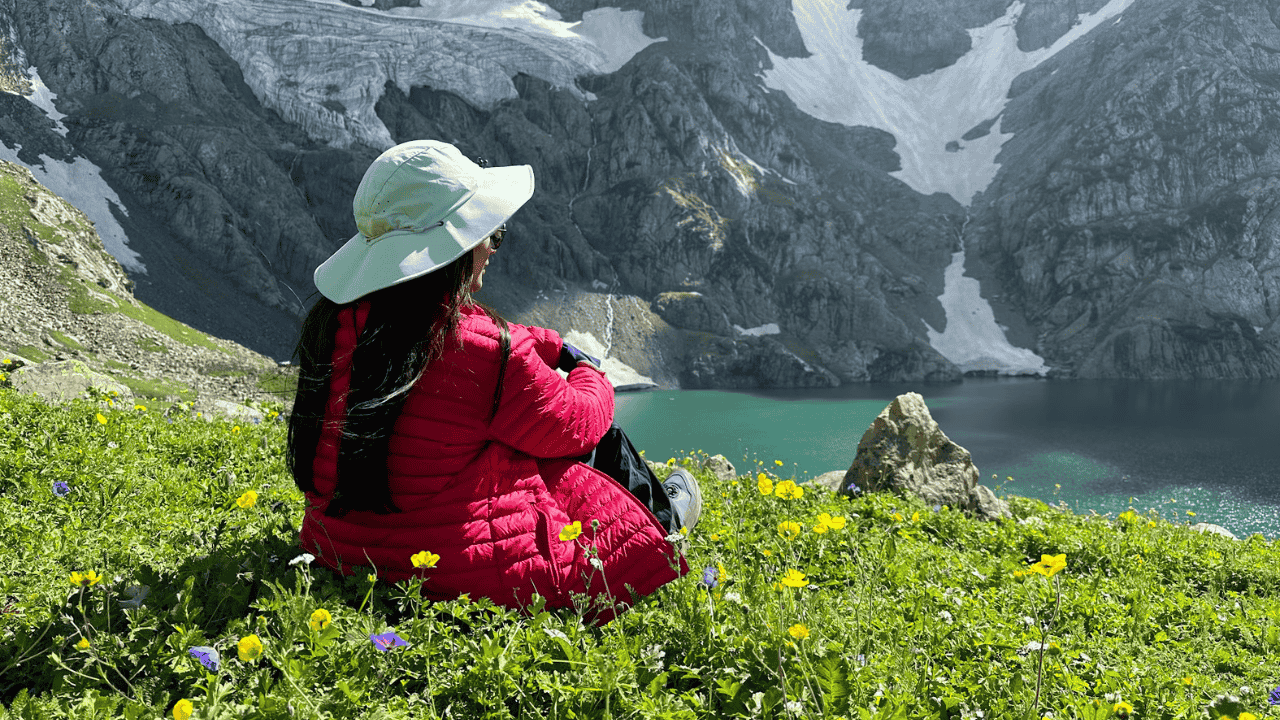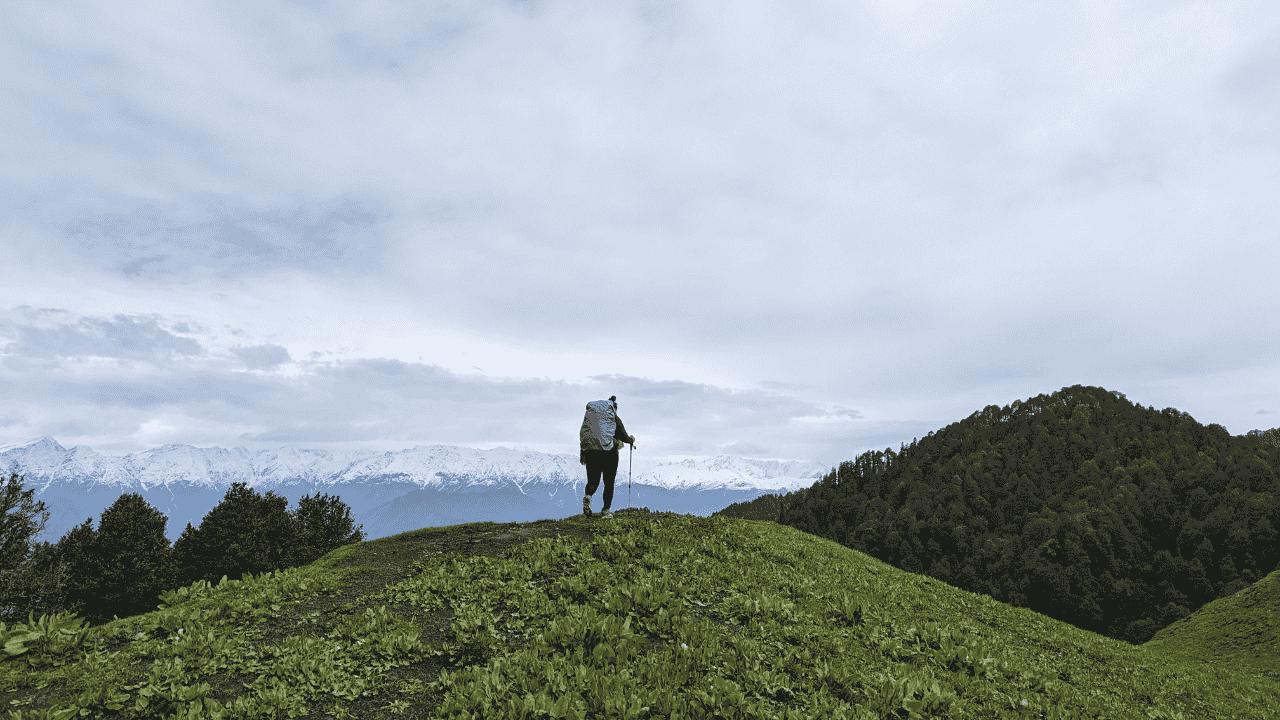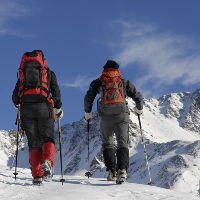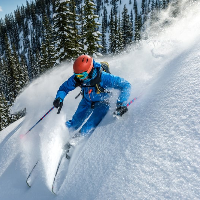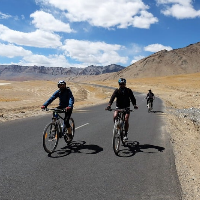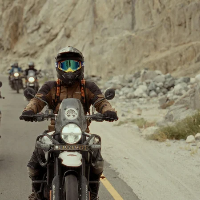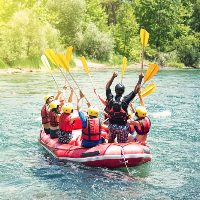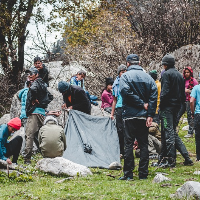Itinerary Description
Brief description:
Undoubtedly, one of the most scenic treks in India. Tarsar Marsar lake trek is an alpine trek in the Jammu Kashmir region of India. Undoubtedly, one of the most scenic camping sites. Most importantly, it is not a much-crowded trek. Especially, in summer it is called the “Switzerland of India”. Also, interestingly, it is known as the sister trek of Kashmir great lakes.
The Tarsar marsar lake trek should be on your bucket list. The settings of Kashmir are just astounding. The vast meadows, the tall pine forests, the glades and so much more. Tarsar lake is one of the prettiest lakes in Kashmir. Above all the beauty of this trek is you, you will ghetto camp right on the edge of the lake. Especially, around the glades, you get to witness the wonderful beauty.
Tarsar marser trek location is enveloped in the most original form of beauty. The color of the lake of tarsar is aquamarine blue. Hanging cliffs on one side patched with snow and another side you camping on the glade. That experience itself will give you the energy to move further. Then you go to sundarsar, Marser. All these 3 lakes are camper's delight. These 3 alpine lakes of tarser marser make it special.
Introduction:
Tarser Marser is a high-altitude trek yet not a very difficult one. Besides, it is usually shrouded amidst clouds. The entire perimeter of the lake gives a whole new perspective. Tarser marser lake trek is at an altitude of 3810 m. Furthermore, the trail is naturally at the brim with the most majestic views. It is surrounded by lush green meadows, pristine rivers, and snow-capped peaks. And amazing views of Dachigam valley park.
The tarser marser lake trek is right at the center of Kashmir. Starting from the basecamp Aru valley to Lidderwat landscapes will sway you away. From the deep emerald rolling valleys of Shekhwas to gorgeous alpine lakes. Tarsar marsar lake trek transforms your entire viewpoint. The camping site on the grassy glades is just so intimate. The rare moment entangled between the adventures and your heart will remain forever.
Best Time to Trek
The most preferable time to do the tarsar marser lake trek is from the beginning of July to the beginning of September. Even though it's a general monsoon month in India. But Kashmir doesn’t receive much rainfall. And the reason behind it is, the Pir panjal ranges prevent the rain clouds from reaching Kashmir. July to September are the most comfortable months for tarsar marser trekking. Because all the other months are shivering cold and a lot of snow. Which eventually makes the trek difficult. Also, interestingly the trek changes its color in these 3 months.
Usually, in July the temperatures are quite moderate between 5 degrees at night to 15-18 degrees during day time. And the snow also starts melting in early July. The site is indeed like a magic spell. Yet you will require 3-4 layers to protect yourself. As the air changes unpredictably. From July till September, the green vast meadows are visible. The whole valley is covered in wildflowers. Walking and relaxing after trekking on soft fresh green grass in most of august and September is calming. With the stunning backdrop of rugged mountains and visible peaks
Difficulty Level:
The Tarsar marsar lake trek is moderate. You will have to walk 6 to 8 km every day. There are some tricky patches. But the altitude remains between 13,000 -14,000ft. You need to be physically and mentally prepared to do this trek 2-3 months ahead. Tarsar and marsar are two high-altitude alpine lakes that are only accessible by trekking. It is located in Lidder valley. In this trek, previous trek experience is required. You should be able to cover a 5 km of distance in 30mins. Tarsar marser is not a difficult trek. There is not very big physical challenge or difficulties.
Short Itinerary
Srinagar (1585 mts) to Aru Valley (2449 mts) 103km (4 to5 hours)
Aru (2449 m) to Lidderwat (2749 mts) 10 km trek (6 to 7 hours)
Lidderwat (2749 mts) to Shekhwas (3399 mts) 6km (5 hours)
Shekhwas (3399 mts) to Tarsar (3799 mts) 4km (3 to 4 hours )
Tarsar (3799 mts)to Sundarsar (4000 mts) via Sonamour (3950 mts) pass 6km (5 hours)
Sundarsar (4000 mts) to Homwas (3500 mts) to Explore Marsar lake (4023 mts) 11km (7 hours)
Homwas (4023 mts) to Aru (2449 mts ) 13km (6 to 7 hours) and drive to Srinagar (1585 mts) 103km (4 to 5 hours)
Detailed Itinerary
Day 1
Srinagar (1585 mts) to Aru Valley (2449 mts) 103km (4 to5 hours)
Arrival at Srinagar. From there you will need to take a shared cab or bus to Aru valley. The drive roughly takes 3.5 hours. Or you can take a cab to Pahalgam which is 3 hours from Srinagar. Take a stop and then hop in again for Aru valley which is another 12 km from Pahalgam. Pahalgam to Aru is right across the Lidder river and it haves 30 mins to cross that. Overnight you will stay in camp on grassy land in Aru valley.
Day 2
Aru (2449 m) to Lidderwat (2749 mts) 10 km trek (6 to 7 hours)
As we start the trek from Aru to Lidderwat there is gradual ascension. On the way, you can see the entire Aru valley and pretty warm houses from the far. The trail is filled with pines as you keep ascending. Also, you will walk along with the Flowing Lidder river you will come across a small tea stall where you can take a break for a few mins and enjoy tea. After that, there is a gradual ascent for 1 hour. From there you can see the Lidder forest guest house. You just need to cross the bridge and reach the camp. Overnight stay at camp on the other side of the river.
Day 3
Lidderwat (2749 mts) to Shekhwas (3399 mts) 6km (5 hours)
There is continuous ascend for the first two hours as you begin the trail. You will witness and cross multiple streams and lush meadows. To reach Shekhwas campsite there is another steep ascent. You will get wonderful views of the high Himalayan peaks. Also, apart from that once you reach the Shekhwas campsite. There is another opportunity for you to visit Jadar lake which is a short hour hike. Staying overnight at camp.
Day 4
Shekhwas (3399 mts) to Tarsar (3799 mts) 4km (3 to 4 hours )
The trail from Shekhwas to Tarsar is just wondrous. There is a gradual steep ascent and the views get grand at every step you take. It takes 2 hours to reach the first main destination which is Tarsar lake. It is surrounded by mountain ridges from 3 sides. You get to camp on the grassy glades of aquamarine Tarsar lake. Especially, the colour of the lake changes according to the season. You can spend the rest of the day exploring nearby trails surrounded by Himalayan grandiose peaks. Overnight stay will be at the camp.
Day 5
Tarsar (3799 mts)to Sundarsar (4000 mts) via Sonamour (3950 mts) pass 6km (5 hours)
As you begin the trail toward Sundarsar, you will have a moderately steep ascent in the beginning. Today you will have to cross the ridge and descend into the valley on another side. The view of the ridge is quite breath-taking. While descending you pass through the shepherd?s trail. You will see the lushest grassland ever. Keep walking along to the stream which drains from Sundarsar. Your overnight stay will be at Sundarsar camp.
Day 6
Sundarsar (4000 mts) to Homwas (3500 mts) to Explore Marsar lake (4023 mts) 11km (7 hours)
Today we will cross the boulder-laden trail. And cross the ridge as well. This trail is an hour to reach Marsar lake. Marsar lake has a vantage viewpoint from where you get to witness Marsar engulfed in the clouds. The unobstructed views are just so stunning. Also, you need to keep in mind that the weather is quite unpredictable at this height. So, after soaking in all the beauty of Marsar alpine lake we will head back to Homwas campsite. Overnight stay at Homwas.
Day 7
Homwas (4023 mts) to Aru (2449 mts ) 13km (6 to 7 hours) and drive to Srinagar (1585 mts) 103km (4 to 5 hours)
You will be starting early morning with the sunrise and you will take the same route that you took on day one. The two hours gradual descent will lead to Lidderwat. You will come across the tall pine trail. Some epic views. From Lidderwat to Aru it will take 4 hours. Once you reach Aru you will be driven to Srinagar.
WHAT'S INCLUDED
- ●Meals during the trek (from dinner on day 1, till lunch on Day 7)
- ●Forest Permits/Camping Charges/Permits, Trek Permit Fee/IMF Permission (Upto the amount charged for Indian nationals)
- ●Camping tents, Temp rated sleeping bags, mattress
- ●Safety Equipment includes static rescue rope, seat harness, carabiners, pulleys
- ●Mountaineering course certified Trek Leader with Wilderness Emergency Responder & Rescue. course from NIM Uttarkashi
- ●First Aid Certified Local guide, cook, helpers
- ●Porters or mules for carrying common luggage
WHAT'S NOT INCLUDED
- ●Meals during road journeys
- ●Cost of any kind of Insurance. Since insurance is mandatory, kindly get yourself insured from our partners ASC360 through www.asc360.com
- ●Any expense of personal nature
- ●Portage of personal backpack
- ●Any expense not specified in the inclusion list
- ●Transportation to and from Srinagar
Are you eligible for this adventure?
Annapurna Base Camp Trek takes you to a height of 4,130M and is rated a moderate level trek for its long trekking distances. For its elevation and distances, it is recommended for trekkers with some prior experience in the high-altitudes.
Grade
Moderate
Max Altitude
4024 mts
Distance
46 km

WMRS Level Required

Terrain

Prerequisite Skills

Fitness Benchmark
WMRS Level Required
WMRS 4
Annapurna Base Camp Trek is a level 4 adventure on the Bikat Rating Scale.
This makes it mandatory for you to have high-altitude experience of preferably multiple treks marked at level 3 on the WMRS. The altitude, the terrain, and the nature of the climb demand a certain level of endurance and a need for you to be aware of how your body reacts to the various features of the high-altitude environment.
If you do not know what level of WMRS trek would suit you best, worry not! Fill out this Form:
We will send you a progression chart to help you comfortably get out of your comfort zone in order to level up and ultimately reach your highest potential in the big, bad world of outdoor adventure.
Packing List
This is a list of essential items for individuals going on a trek with Wanderin’ Man Adventures. This list contains only those items which the participants are required to bring with them. The list excludes those items which are provided by Wanderin’ Man Adventures on the trek. We have divided the items into five categories. All the items in the list are essential except for those marked as optional.
🟩 Trekking Gear
- Rucksack bag with rain cover
- Day Pack Bag - Recommended for treks with summit day
- Head Torch with spare Batteries
- UV protection sunglasses
- Water Bottles - 2 bottles of 1 liter each
🟩 Footwear
- Non-skid, deep tread, high-ankle trekking shoes - 1
- Pair of light weight Slipper/Sandals for the campsite - 1
🟩 Clothing
- Quick Dry Warm lower or Track Pants - 2
- Full sleeves T-shirts/Sweatshirts (1 for every 2 days of trekking)
- Pair of thick woolen socks (1 pair for every two days of trekking)
- Thermal Body warmer Upper & Lower - 1
- Undergarments (1 for each day of the itinerary)
- Warm jacket closed at wrist & neck - 1
- Full sleeves sweater - 1
- Rain wear (Jacket & Pants) - 1
- Pair of water-proof, warm gloves - 1
- Woolen cap - 1
- Sun shielding Hat - 1
- Multipurpose Buff - 2
🟩 Toiletries
- Personal toiletries kit (Small Towel, Toilet paper, paper soap, Bar soap, toothbrush, toothpaste, cold cream, etc.)
- Sun screen lotion small pack (SPF 30 & Above) - 1
- Lip Balm small pack - 1
🟩 Utensils
- Small size, Lightweight & Leak proof lunch box - 1
- Plate - 1
- Spoon - 1
- Tea/Coffee (plastic) Mug - 1
🟩 Miscellaneous
- Camera (Optional)
- Carry your medicines in plenty in case you have any specific ailment. Consult your doctor before joining the trek.
- Dry fruits, Nuts, Chocolate bars (Optional)
Note-
- For long treks, please carry a spare sunglasses.
- For winter trek please try to carry a thermal water bottle.
- For long winter treks, please carry an extra pair of warm pants.
Frequently Asked Questions
Why Wanderin Man?
(SET- Safety, Expertise & Trust )

Safety
- ●Small Group Size in the ratio of 6:1 (participant to leader)
- ●No compromise on safety and sustainability promise
- ●Experienced and Certified Mountaineering Professional Leaders
- ●Region Mapped with Emergency Evacuation Plan
- ●Certified Standard Equipment by UIAA (International Climbing and Mountaineering Federation certification) & other Similar Bodies
- ●Minimized Risk Management Standard Operating Procedure are applied for every Trek and tour
- ●Certified First Aid Support and Doctors* with constant availability of Safety Equipments like Medical Kit, Rescue Kit
- ●Constant communication is aided with the help of Communication Devices
- ●Certified and registered Transporter for transportation purpose

Expertise
- ●Founders of the company have extensive experience of 15 years having organized approx 2000+ trekking, Expeditions and other adventure activities.
- ●Wanderin’ Man Adventures operating expeditions above 8000 mts.
- ●Under the umbrella of Wanderin’ Man Adventures 15 + adventure activities Programs have been organized
- ●Founders have mountaineering certifications from the esteemed mountaineering institutes of India.
- ●Team is composed of experienced mountaineers and trek leaders with thorough understanding of norms and procedures.

Trust
- ●Trust has been the hallmark of our company since its inception be it any program on the list.
- ●Special emphasis is laid on the use of standard procedures and equipments as per the mountaineering norms
- ●95% of our clients have availed our service on repeat basis.
- ●Our business has expanded primarily based on the “word of mouth” from our existing clients to new ones
What Our Customers Say
Cancellation Policy
Cash Refund (All events including Friendship Peak Expedition except other Mountaineering Expeditions) - Cash refunds are only available for bookings made without any discounts, such as promotional codes or dynamic discounts. Additionally, cash refunds are not available for shifted batch bookings or if the booking status is "Booked". The amount of the refund will be determined based on the following guidelines:
Cancellations made up to 45 days before the departure date
Cancellations made up to 31 days before the departure date
Cancellations made between 30 and 21 days before the departure date
Cancellations made between 20 and 11 days before the departure date
Cancellations made less than 11 days before the departure date are not eligible for a cash refund.
Similar Adventures
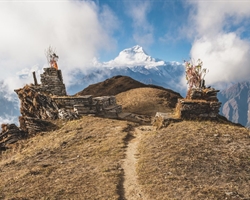
Khopra Ridge Trek
Less popular, less crowded, more beautiful alternative to ABC
- Nepal
- 10 Days
- BRS 4
- 4767 m
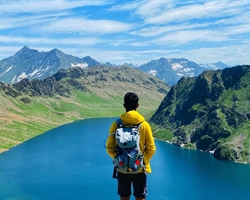
Tarsar Marsar Trek
A Shorter and Easier Alternative to the Kashmir Great Lakes Trek
- Kashmir
- 7 Days
- BRS 4
- 4024 m

Hampta Pass Trek
An Enchanting Cross-Over from Manali to Spiti
- Himachal
- 5 Days
- BRS 4
- 4200 m
 Max Participants :
15
Max Participants :
15
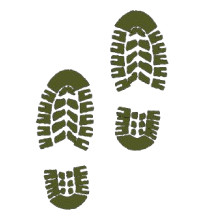 Trail Type :
Starting and ending at the same point
Trail Type :
Starting and ending at the same point


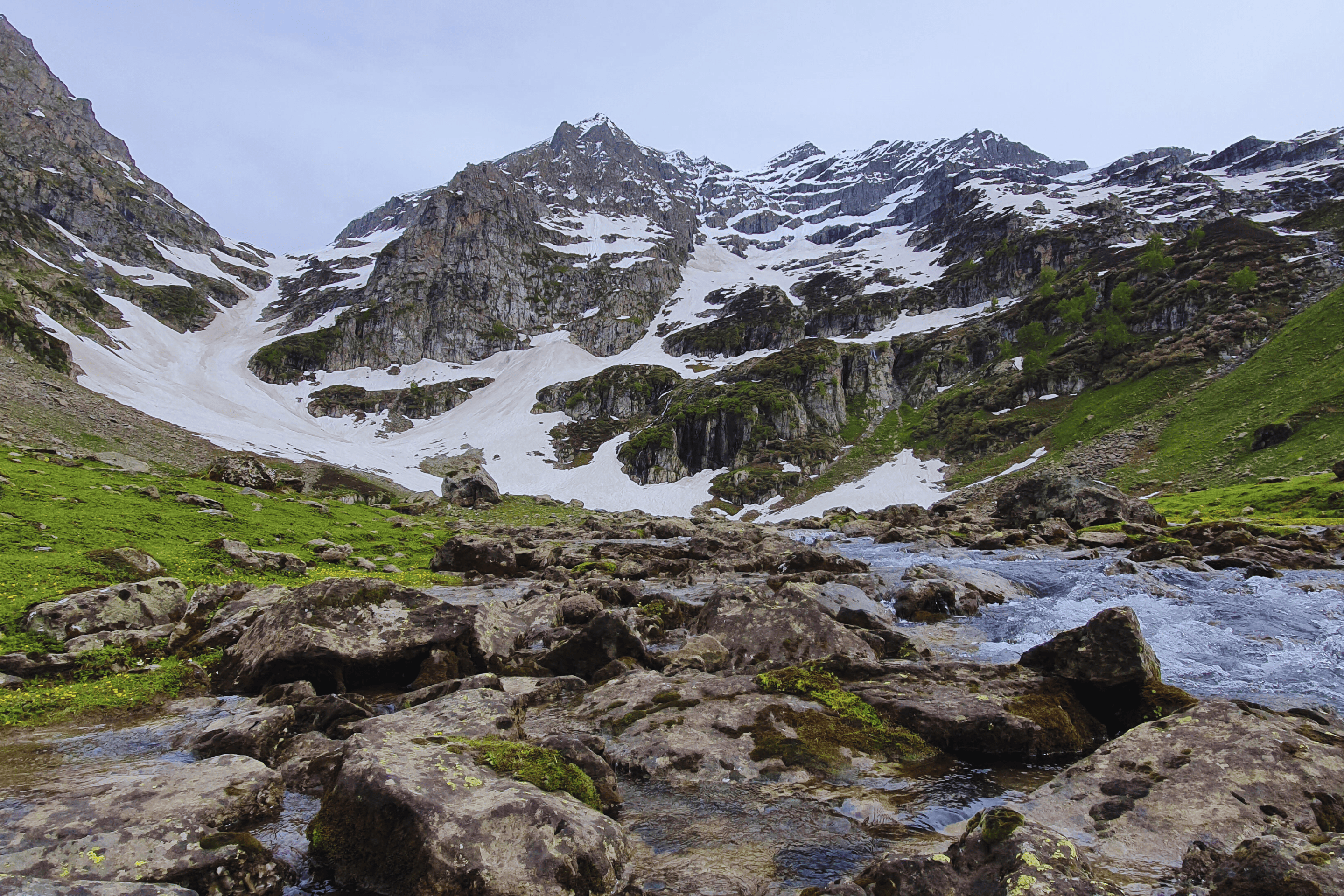




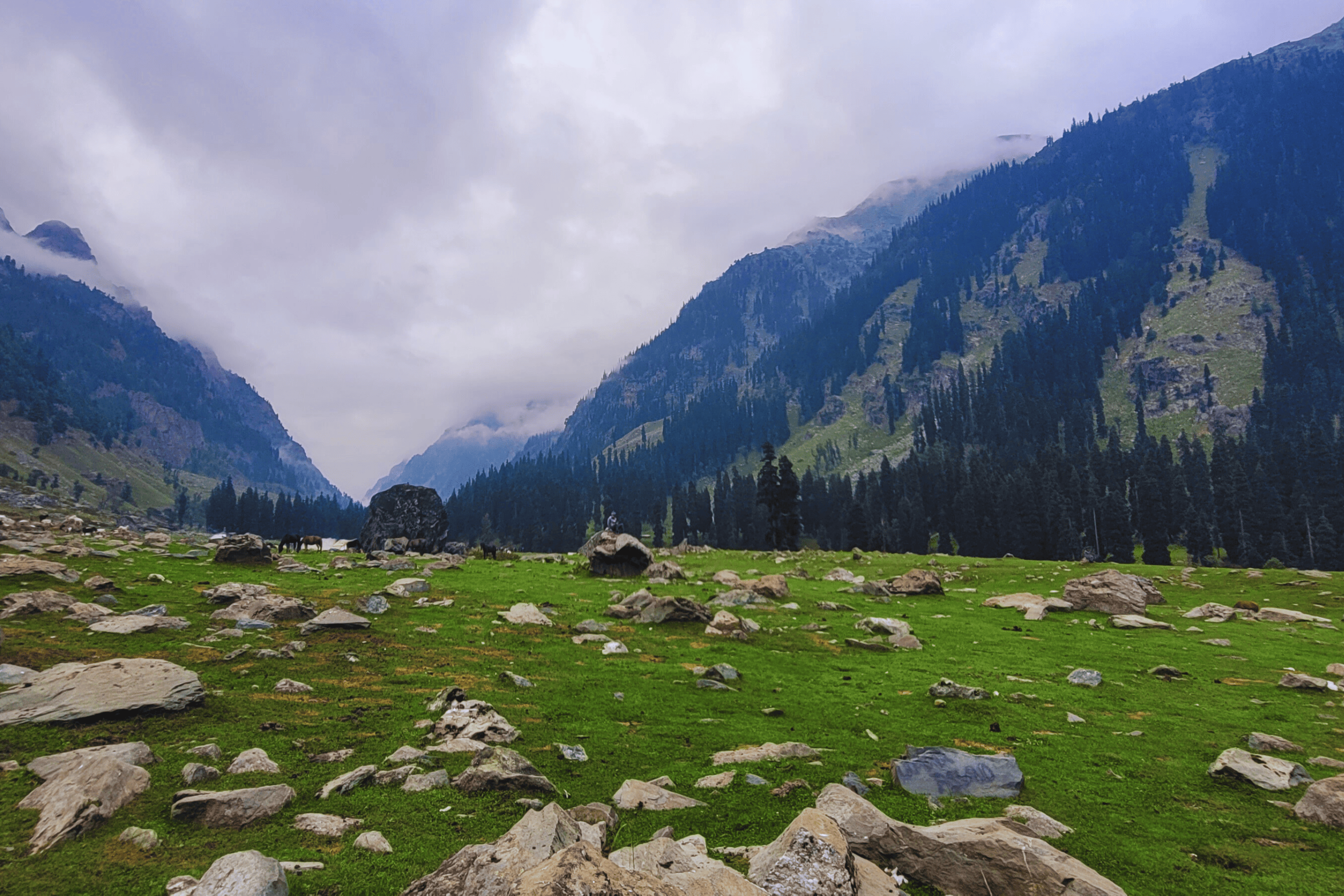
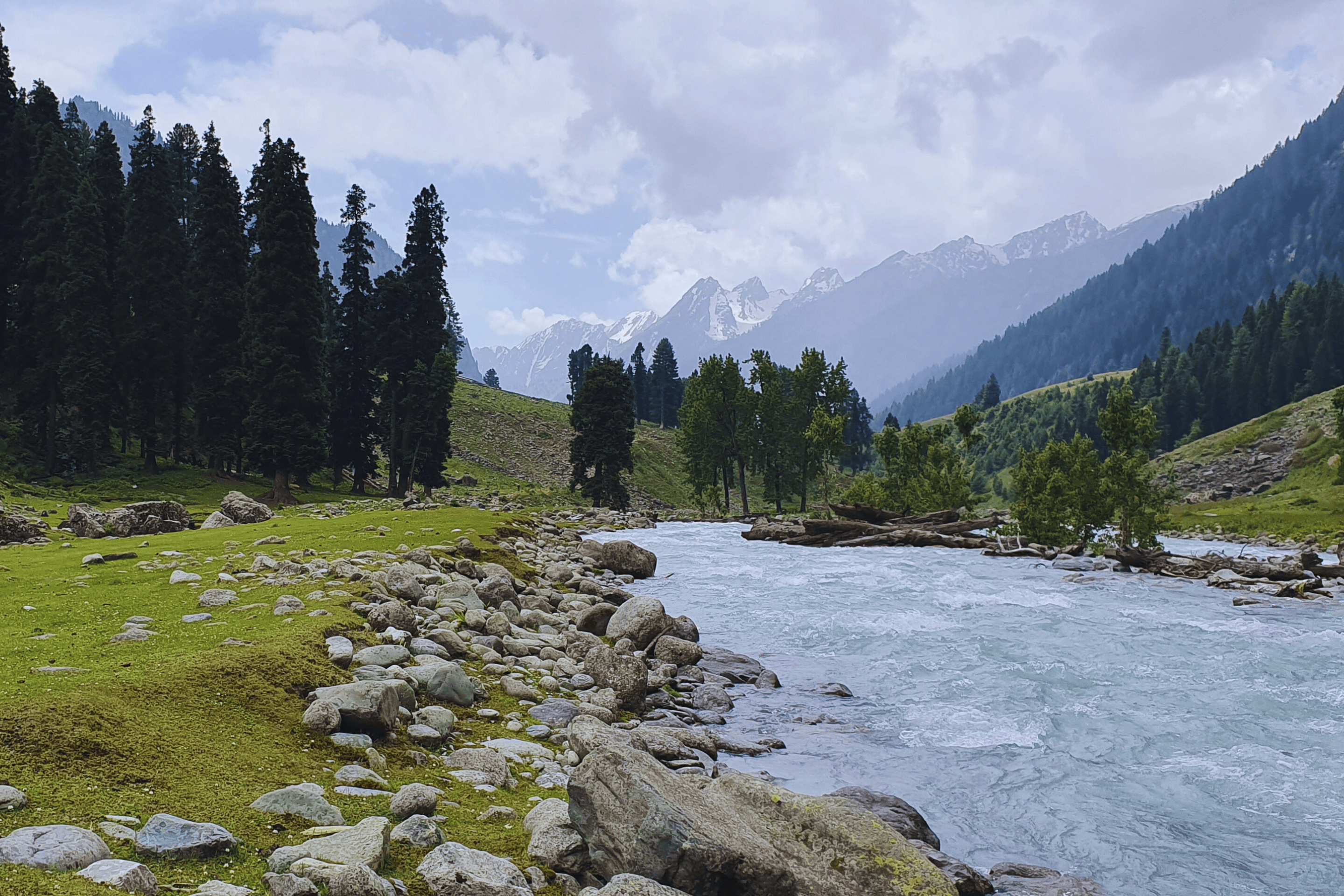


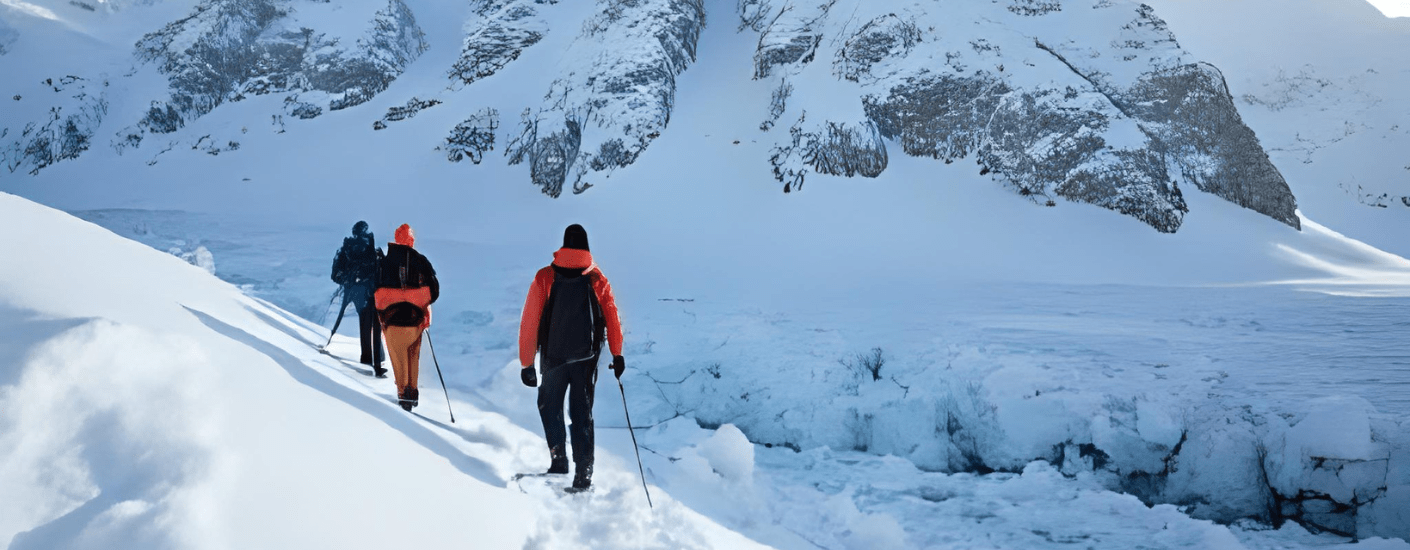
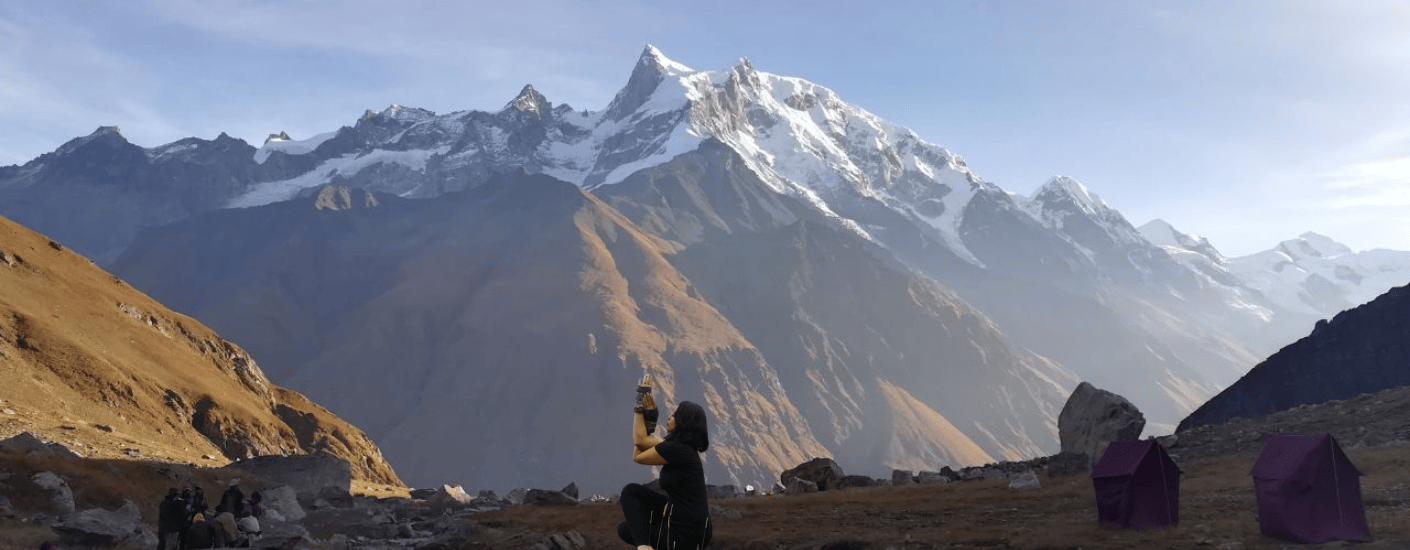

.png)
